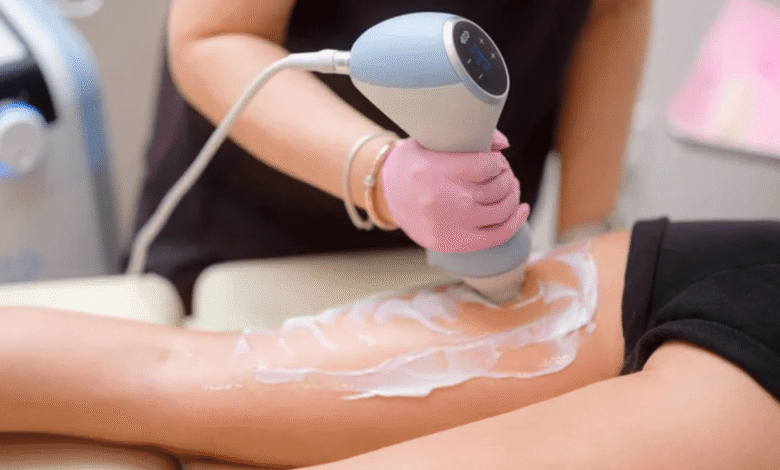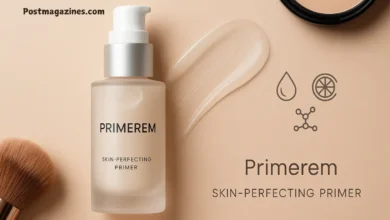Cellulogia: Understanding the New Trend in Cellulite Treatments

Cellulite has long been a common cosmetic concern for people worldwide, especially women. As new beauty trends continue to emerge, the word cellulogia has started to appear across wellness blogs, beauty sites, and even product marketing campaigns. But what exactly does cellulogia mean, and does it represent a real breakthrough in skincare and body contouring? This article examines the origins, applications, and implications of cellulogia in comparison to established approaches to cellulite treatment.
Cellulogia: What Does the Term Mean?
The term cellulogia appears to be derived from the combination of “cellulite” and “-logia” (from Greek, meaning “study of”). At face value, it could be interpreted as “the study of cellulite.” However, in practical use, it is not a recognized scientific discipline. Instead, cellulogia has surfaced as a marketing term used to describe specific anti-cellulite solutions, creams, and holistic treatment programs.
Unlike dermatology or cosmetology, cellulogia lacks an established academic foundation. Instead, it is being adopted by wellness brands and bloggers to frame their discussions and products related to cellulite in a more sophisticated or scientific-sounding way.
Cellulogia in the Beauty and Wellness Industry
In the beauty industry, cellulogia is commonly associated with anti-cellulite products, body treatments, and lifestyle programs designed to smooth skin texture. Many websites use the keyword to present it as a holistic approach that combines:
- Topical creams claiming to reduce the appearance of cellulite.
- Massage techniques such as lymphatic drainage or deep-tissue massage.
- Lifestyle changes involving hydration, diet, and exercise.
- Alternative therapies, such as dry brushing and essential oils.
While these methods may provide temporary improvements in skin appearance and circulation, they often lack strong clinical evidence for long-term results. Nonetheless, the beauty market embraces terms like cellulogia because they add credibility and branding power to treatment regimens.
Cellulogia: Products and Treatments Marketed Under the Name
Several niche brands have begun promoting cellulite creams, serums, or programs to address this issue. These products often include ingredients like caffeine, retinol, peptides, or plant extracts—substances frequently featured in anti-cellulite formulations. Some marketing claims suggest that these products:
- Improve skin elasticity.
- Reduce fat cell accumulation.
- Stimulate circulation and lymphatic flow.
- Deliver visible results in weeks.
Although these promises sound appealing, consumers need to remember that cellulogia is not a medically verified treatment category. The effectiveness of such creams and programs depends more on their active ingredients and user consistency than the branding term itself.
Cellulogia: Comparison with Evidence-Based Cellulite Treatments
To evaluate the relevance of cellulogia, it’s essential to compare it with evidence-backed cellulite treatments endorsed by dermatologists:
- Laser and radiofrequency devices: FDA-approved technologies that can stimulate collagen, reduce fat pockets, and improve skin texture.
- Subcision (Cellfina): A minimally invasive procedure that releases fibrous bands under the skin responsible for dimpling.
- Injectable treatments: Some injectables dissolve connective tissue bands that contribute to the appearance of cellulite.
- Topical retinoids and caffeine creams: Although their effects are modest, they can provide a slight smoothing of the skin when used consistently.
Compared to these clinical approaches, cellulogia remains a loosely defined concept, leaning more toward wellness marketing than science-driven solutions.
Cellulogia: Popularity and Online Presence
A glance across blogs, beauty websites, and smaller wellness domains reveals that cellulite is a trending keyword in online content. It is used in:
- Blog posts introducing “cellulogia” as a new beauty movement.
- Wellness platforms offering holistic lifestyle programs.
- Niche websites selling products branded under the name.
SEO-driven strategies primarily fuel this popularity. Marketers have recognized that unique, invented terms like cellulogia can rank more easily in search engines, while still aligning with the growing demand for cellulite-related solutions.
Cellulogia: Consumer Interest and Search Intent
People searching for cellulogia are often looking for one of two things:
- Informational intent – They want to understand what the word means, whether it is a treatment, a study, or a trend.
- Commercial intent – They are considering trying a product or program marketed under the name “Cellulogia.”
This dual intent makes the keyword versatile for SEO-focused content creators. Informational articles can attract readers seeking clarity, while product reviews or comparisons can target those ready to make a purchase.
Cellulogia: The Risks of Marketing-Driven Terms
One of the biggest challenges with terms like cellulogia is the potential for consumer confusion. Because it sounds like a legitimate scientific field, many people may assume it is a medically recognized term. However, cellulite is a complex condition influenced by genetics, hormones, and skin structure, and it cannot be eliminated with creams or quick fixes.
Relying solely on marketing-driven solutions risks disappointment, wasted money, and misinformation. Consumers should always cross-check claims with dermatological sources before investing heavily in new treatments.
Cellulogia: A Holistic Lifestyle Approach
Despite its lack of scientific foundation, the concept of cellulogia does encourage a more holistic perspective on beauty and wellness. By blending skincare, massage, diet, and exercise, the approach reflects the reality that cellulite reduction often requires multiple strategies rather than a single “miracle cure.”
For example, healthy lifestyle practices that align with the “cellulogia” philosophy include:
- Staying hydrated to maintain skin elasticity.
- Eating a balanced diet rich in antioxidants.
- Engaging in regular physical activity, especially strength training.
- Incorporating massage or lymphatic stimulation into self-care routines.
While these habits may not eliminate cellulite, they can enhance overall skin appearance and boost body confidence.
Conclusion: Is Cellulogia Worth Your Attention?
The rise of cellulogia reflects how beauty and wellness industries often create new terms to capture attention, drive SEO, and market products. While cellulogia is not a scientific discipline, it is being positioned as a holistic philosophy for tackling cellulite through creams, massage, and lifestyle adjustments.
For consumers, the key takeaway is to approach cellulogia with curiosity but also skepticism. It may serve as an entry point into healthier self-care routines, but it should not replace evidence-based treatments backed by dermatology. If you encounter a product or program branded as ‘cellulogia,’ evaluate it based on its ingredients, reviews, and medical guidance, rather than the marketing term itself.
You May Also Read: Primerem: The Beauty Primer Blurring the Line Between Skincare and Makeup

